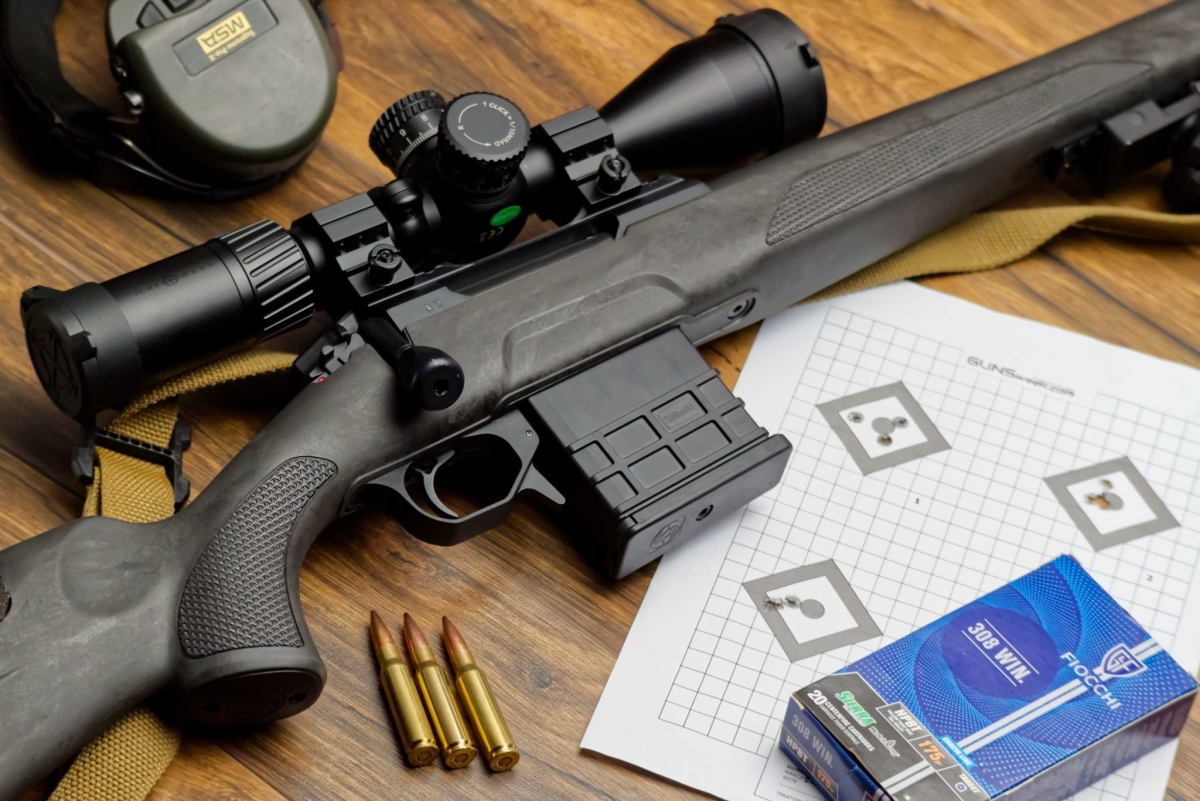Test: Sabatti Rover Shooter ICM
The Sabatti Rover Shooter ICM is one of the best bolt-action rifles on the market, with even better performance thanks to the carbon-filled polymer stock: we tested it.
Sabatti is a very well-known rifle manufacturer in Europe: with its 300 years of history, it is the oldest recorded firearms manufacturer in the world after Beretta. Sabatti rifles are very appreciated for their excellent accuracy, and the new Rover family is no exception, offering many of the features of Sabatti’s high end carbines at a more affordable price.
The Sabatti Rover Shooter is meant as the most versatile and well rounded of the new Rover family of carbines, with a special focus on accuracy, as made evident by the MRR (Multi Radial Rifling) barrel, opposed to the standard rifling on the other models.
MRR is based on smoothly joined, different radius arcs that produce better accuracy, better muzzle velocity, longer barrel life and reduced fouling in the bore.
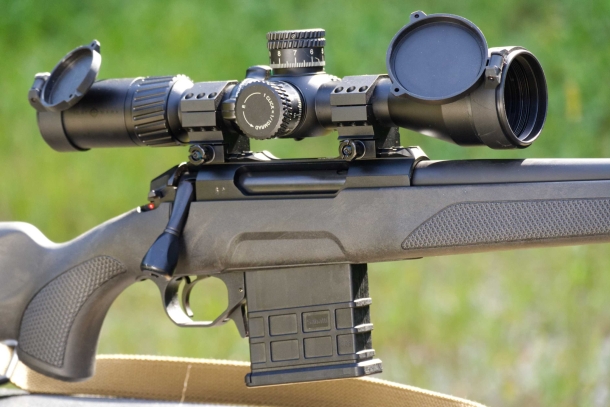
The 7075 receiver of the Sabatti Rover Shooter ICM helps keeping the weight low.
Wasn’t this enough, Sabatti developed a new stock specifically for this model: the ICM (Injected Carbon Matrix) stock, using a polymer loaded with carbon fiber for added sturdiness and rigidity, deliberately left bare to show the material. With its 20” (51 cm), 0.79” (20mm) diameter heavy barrel, the Rover Shooter ICM weighs in at about 6.6 pounds (3 kg) naked and 11.6 pounds (5.3 kg) as tested, with the Sightmark Presidio 3-18x50 LR2 scope, stock spacers, UTG Recon 360 bipod, sling and loaded 7-round AICS magazine: for sure no mountain rifle, but still a compact and comparatively light carbine to carry.
The Sabatti Rover Shooter ICM is provided with the Sabatti Match trigger, a single stage, three lever trigger group, with a nominal pull weight of 1.1 lbs (500g). When tested, though, this specific carbine showed a trigger pull weight of about 2.4 lbs (1.100g): a minor issue, easy to solve considering the pull weight can be adjusted, so, the ink still fresh on the sell certificate, I drove to the nearby range to perform the first of a series of tests.
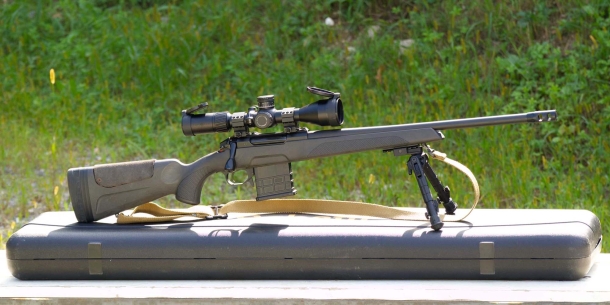

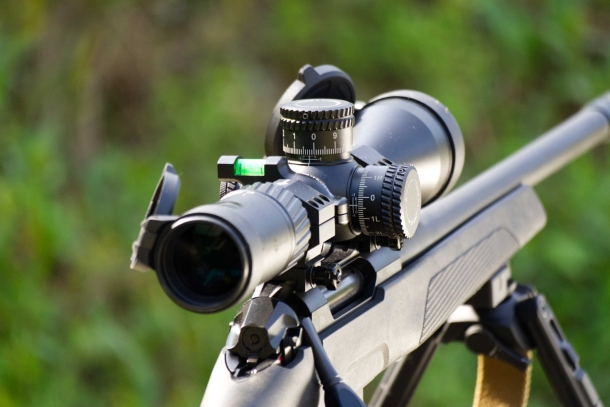
The test has been performed with a Sightmark Presidio 3-18x50 LR2 scope
Gun Bank is a gun shop in Lograto, in the province of Brescia, Italy, and a very peculiar gun range with twelve underground rifle lanes extending to 333 yds (300 m). This is not something you see every day and allows to perform accuracy tests without the influence of wind or bad weather, at a comfortable temperature.
Unfortunately, after a few shots the pin in the bolt stop failed, forcing me to go back to the factory and have it replaced. Mishaps like this can happen, and how the manufacturer deals with them makes the difference: Sabatti customer care is excellent, and though arriving with the briefest forewarning, the gun was fixed in a minute.
The Shooter is based on the new Sabatti Rover action, with a 7075 receiver and a three-lug bolt locking into the barrel extension.
The short bolt throw of the three-lug action prevents hitting your knuckles against the scope’s eyepiece bell, but as for being “faster than a two-lug action”, well, that is seldom true. The shorter throw involves steeper cocking ramps and stiffer cycling, and the Rover Shooter ICM is no exception; anyone who shot an old Mauser action, or just the old Rover two lug action, knows what I’m talking about. Apart from this, the action works well and feeds reliably, even when cycled fast.

The Sabatti Rover Shooter with ICM stock is available in two versions, with Sabatti AICS magazine or Sabatti standard polymer magazine, both 7 rounders.
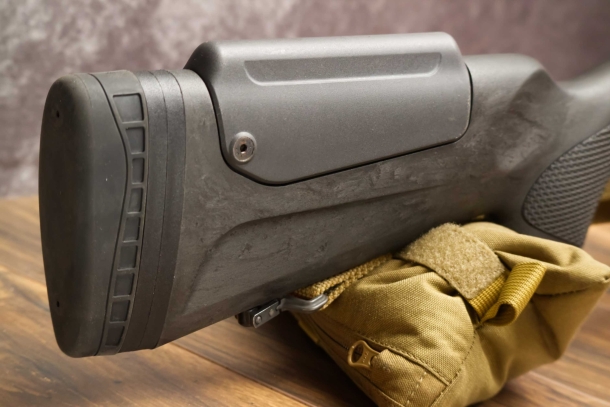
The stock can be adjusted in length of pull with spacers, and in comb height by three different available cheek rests.
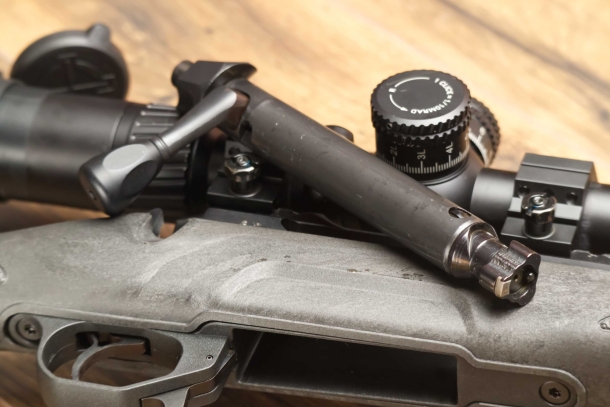
The three-lug bolt allows for a short bolt throw than a two-lug bolt, but it's stiffer.
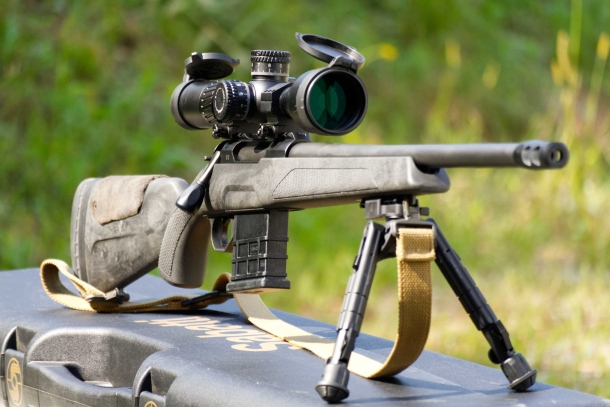
I found the stock ergonomics very good. Length of pull and comb height are spot on for someone in the mid percentile, yet the stock is still comfortable for someone like me who is 6’6” tall. The additional spacers just make it perfect.
The basic cheek rest had my eye right behind the scope, so there was no need to use one of the optional higher ones. I just swapped it for an identical one I had modified some time ago by adding a suede layer for comfort.
I added a Picatinny rail section for the bipod to the M-Lok plate under the handguard, and a sling, which I feel any rifle light enough to be routinely carried should have.
I’d have preferred the front sling lug to be on the near side of the M-Lok plate, instead of the tip side, so that the sling does not interfere with the bipod and the rifle could be carried American style, which is not possible for any length of time with the bipod digging into your shoulder. Rhodesian carry on the other hand is just fine. On the other hand, the stud on the end of the handguard allows to mount a Harris bipod as forward as possible.
As said, the rifle comes with the Match trigger group. The standard, two lever trigger group found on other models of the Rover family is clean, crisp and breaks at about 3 lbs. It's a very good trigger in its simplicity, and I like it, but it's nice to find the three lever trigger on this model, a trigger that lives up to its name with very clean and good trigger pull. The only fly in the ointment, so to say, is the lawyerproof pull weight of 2 lbs and change (at least on the test gun). I want to highlight once again how the trigger can be adjusted for pull weight, though you need to pull the action from the stock. I choose anyway to test the gun as it came from the factory.
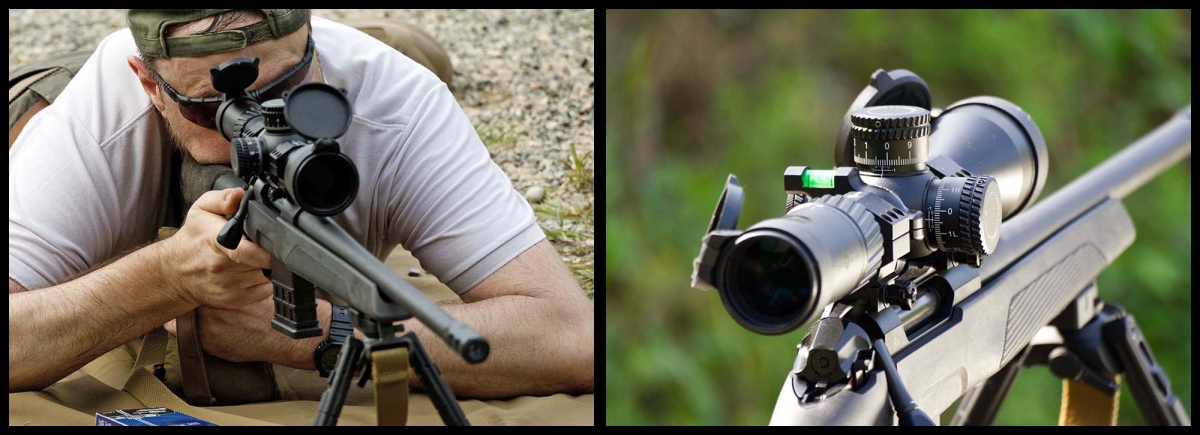
The test scope: Sightmark's Presidio 3-18x50 LR2 FFP rifle scope.
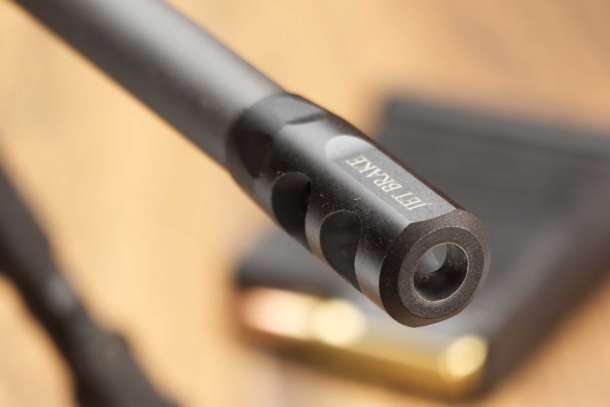
The barrel comes from the factory with Sabatti's "Jet Brake" muzzle brake
The 3-lever trigger group is crisp, clean, and, like target triggers, has a short overtravel built in with the same amount of pull weight there is at trigger break, ensuring no variation until the bullet has left the muzzle.
The trigger I tested had just a slight, slight hesitation in the first half mm or so of travel. Just to avoid misunderstandings, I’m really nitpicking here. As it is, it is still one of the best triggers I ever tried, including some on rifles that sell for three or four times the Rover Shooter ICM, and I just love it.
When shooting the Rover Shooter ICM bolt action rifle, Sabatti’s two ports “Jet Brake” muzzle brake makes an excellent job of reducing recoil (and making anyone else on the line hate you), while the rubber recoil pad has just the right density to absorb the kick of the rifle. Should you wish to keep your friends at the range and remove the brake, the rifle is delivered with a thread saver that once installed has a seamless fit, disappearing on the barrel.

The three groups with Fiocchi Exacta 175 gr.

The three groups with Sako TRG Precision 175 gr.
Shots fired!
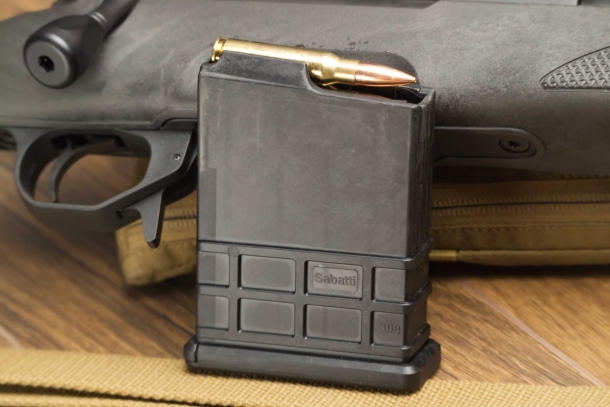
The AICS compatible magazine holds 7 cartridges.
The carbine was tested with four different cartridges:
-
Fiocchi Exacta 175 grains with Sierra Match King bullet (ballistics equivalent to M118LR)
-
Sako TRG Precision 175 grains with Lapua Scenar-L bullet
-
Sellier & Bellot Training 147 grains ball ammunition (ballistics equivalent to M80 ball)
-
Hornady Black 168 grains with A-Max bullet
Each cartridge was tested at 100 meters from the bench, with bipod and rear bag, shooting 9 shots single-fed in three, three-shot groups at a leisurely pace but without letting the barrel cool down.
The rifle was completely cooled down with the help of compressed air through the barrel between each cartridge tested. Accuracy was very good, with a marked preference for Fiocchi Exacta 175 and SAKO TRG Precision 175 grains cartridges.
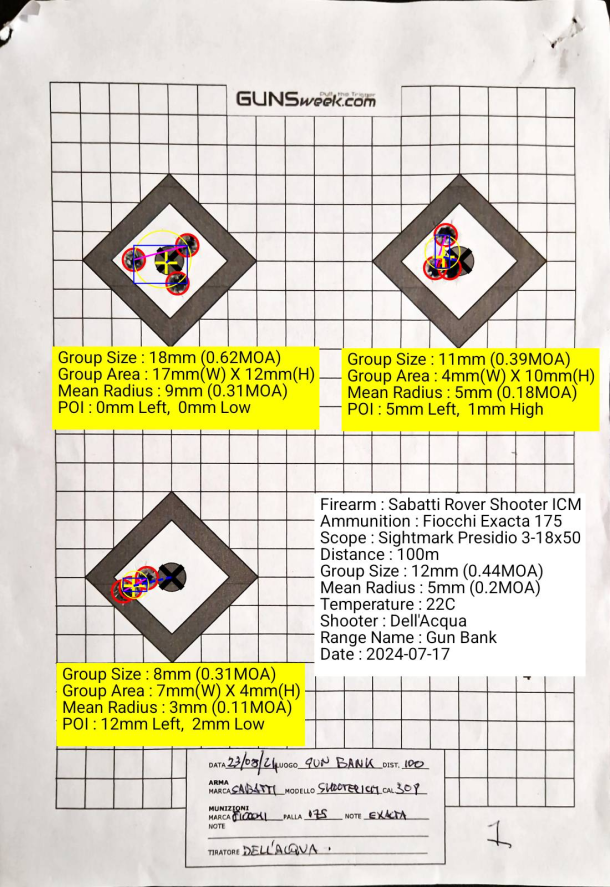
Fiocchi Exacta 175gr with Sierra Match King bullet

Sako TRG Precision 175gr with Scenar-L bullet

Sellier & Bellot 147gr FMJ

Hornady Black 168 with A-Max bullet

overall aggregate 9-shot groups for each cartridge
Fiocchi Exacta 175
Avg V0 771 m/s (2530 fps)
Avg E0 3370 J (2486 foot pounds)
SD 5.9
best group mean radius/diameter 0.11 MOA / 0.31 MOA
Avg group mean radius/diameter 0.2 MOA / 0.44 MOA
Overall 9 shot group mean radius / diameter 0.28 / 0.78 MOA
Sako TRG Precision 175 grains
Avg V0 764 m/s (2506 fps)
Avg E0 3308 J (2440 foot pounds)
SD 4.0
best group mean radius/diameter 0.2 MOA / 0.53 MOA
Avg group mean radius/diameter 0.25 MOA / 0.6 MOA
Overall 9 shot group mean radius / diameter 0.24 / 0.64 MOA
Sellier & Bellot Training 147 FMJ ball
Avg V0 853 m/s (2799 fps)
Avg E0 4239 J (3127 foot pounds)
SD 2.9
best group mean radius/diameter 0.25 MOA / 0.71 MOA
Avg group mean radius/diameter 0.38 MOA / 0.94 MOA
Overall 9 shot group mean radius / diameter 0.53 / 1.63 MOA
Hornady Black 168 A-Max
Avg V0 814 m/s (2671 fps)
Avg E0 3603 J (2657 foot pounds)
SD 4.6
best group mean radius/diameter 0.09 MOA / 0.25 MOA
Avg group mean radius/diameter 0.2 MOA / 0.49 MOA
Overall 9 shot group mean radius / diameter 0.48 / 1.23 MOA
As a little extra beyond what I planned to test, I also found I had six Geco Softpoint 170 grainers hunting ammunition which printed two nice groups of 0.34 mean radius and 0.7 MOA diameter, and of 0.23 MOA mean radius and 0.54 MOA diameter. Not bad for a SJSP cartridge that has no target shooting pretenses.
All in all, Fiocchi Exacta 175 and Sako TRG Precision 175 were the best performers, with the Fiocchi printing the best 3.-shot group between the two, but the Sako printing the best overall 9 shot group, with the Hornady Black A-Max printing three nice three shot groups (and the best absolute 3-shot group) but showing a marked traveling of the group center of mass, which might be indicative of heat migration. Why this is present with this cartridge and not the Fiocchi or Sako is subject for speculation. One hypothesis is that the bullets left the barrel not so close to the vibrational node as the other two, which may have caused any thermal migration to have a more marked effect as the barrel heated up.
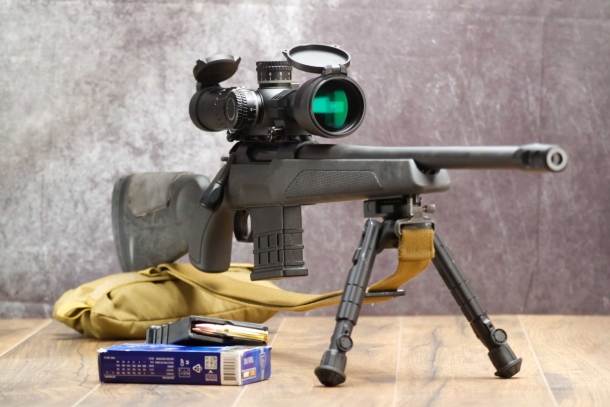
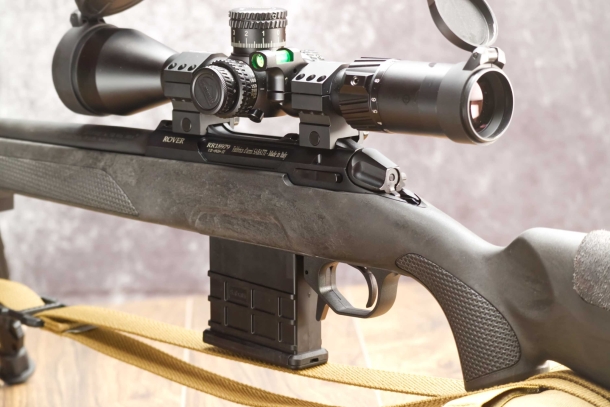
Considering the Rover Shooter ICM 20mm (0.79”) diameter barrel, that could be defined a varmint barrel, but no bull barrel by any means, I believe the Fiocchi and Sako results showcase the accurate stress relief work Sabatti puts in during the barrel manufacturing process.
As I expected, the Rover Shooter ICM didn’t like the 147 grain ball ammunition: other tests on other Sabatti MRR barreled carbines chambered in .308 Winchester confirm that these rifles don’t like this cartridge, but prefer heavy bullets, 168 or, even better, 175 or 180 grainers.
After testing, I can say I like the Sabatti Rover Shooter ICM a lot: it is a very accurate rifle, much lighter and more compact than other models in Sabatti’s lineup, certainly more than my Sabatti Tactical (first model) with its almost 17.5 pounds of weight and howitzer-like barrel, particularly considering that, for hunting purposes, you could forfeit the bipod and choose a hunting scope in Sightmark's Core 2.0 series and save over 18 ounces (500g). I’d like a couple of things to be different, but this is a very practical, accurate and versatile carbine ideal for anyone who wants a multipurpose firearm without breaking the bank account.
Specifiche: Rover Shooter ICM
Bolt action carbine
Hunting, target, tactical
.308 Winchester
Three lug
Sabatti Match
Manual, 2 positions with bolt locking
7 shots, polymer, Sabatti or AICS compatible.
20" (51cm); 0.79" (20mm) diameter; Multi Radial Rrifling (MRR)
None, integral Picatinny rail on receiver
40.1" (102 cm)
6.6 lbs (3 kg)
7075 receiver; injected carbon matrix (ICM) polymer stock.
TBD



